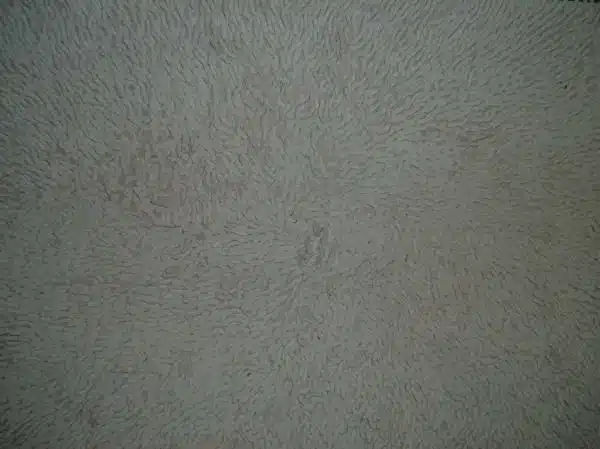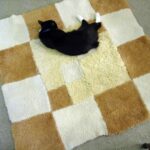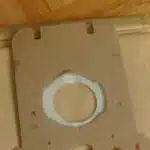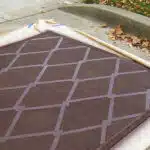Bathroom rugs are an essential part of any bathroom decor. Not only do they add warmth and comfort underfoot, but they also help to absorb water and prevent slips and falls. However, with regular use, bathroom rugs can quickly become dirty and unhygienic if not washed and cared for properly. As a bathroom rug care expert, I am here to share some tips on how to wash and care for your bathroom rugs to keep them looking fresh and clean.
Firstly, it’s essential to understand the importance of washing your bathroom rugs regularly. These rugs are exposed to moisture from showers or baths daily, making them the ideal breeding ground for bacteria, mold, and mildew. To avoid this buildup of harmful substances, it’s recommended that you wash your bathroom rug at least once every two weeks. In addition to this, regular vacuuming or shaking out of the rug will remove dust and debris that may have accumulated over time. With proper care, your bathroom rug will last longer and remain hygienic for use by yourself or guests for years to come.
The Importance Of Bathroom Rug Maintenance
Regular cleaning of bathroom rugs is essential in maintaining a healthy and hygienic environment. Bacteria and germs thrive in damp areas, making the bathroom a perfect breeding ground. Without proper maintenance, these microorganisms can accumulate on your rug, leading to unpleasant odors and potential health hazards. Moreover, dust and dirt can also collect on your rug over time, causing it to lose its original texture and color.
Preventive measures such as regular cleaning can help extend the life of your bathroom rug. It is recommended to wash your rug at least once every two weeks or more frequently if it receives heavy foot traffic. Depending on the material of your rug, you may use either a washing machine or hand washing method. For instance, cotton rugs are safe for machine washing while delicate materials like wool require gentle handwashing.
In addition to regular cleaning, vacuuming and shaking out your rug can also help remove debris that may have accumulated over time. Prioritize vacuuming high-traffic areas such as entryways or around the toilet bowl where bacteria may be more concentrated. A good shake outdoors also helps loosen any embedded dirt before washing. By following these simple preventive steps, you can ensure that your bathroom stays clean and hygienic while prolonging the lifespan of your rug.
Transition: Now that you understand the importance of regular cleaning and preventive measures let us delve into specific ways to maintain your bathroom rug starting with vacuuming and shaking out your rug.
Vacuuming And Shaking Out Your Rug
- Regular vacuuming of the bathroom rug can help to remove dirt and debris that can cause staining and discoloration.
- Shaking out the rug outdoors can help to dislodge stubborn dirt and dust particles that may have become embedded in the fabric.
- The frequency of vacuuming and shaking out will depend on the amount of traffic in the bathroom.
- High traffic bathrooms should be vacuumed twice a week and shaken out once a month.
- Lower traffic bathrooms should be vacuumed once a week and shaken out once every two months.
- It is important to follow the manufacturer’s instructions for the best cleaning results.
Vacuuming
To properly care for your bathroom rugs, it is important to regularly vacuum them. The frequency of vacuuming will depend on the amount of foot traffic in the bathroom and how often the rugs are used. For high traffic areas, it is recommended to vacuum at least once a week. For less frequently used bathrooms, vacuuming every two weeks should suffice.
When selecting a vacuum for your bathroom rugs, it is important to choose one that has enough suction power to effectively remove dirt and debris from the fibers. A handheld or stick vacuum can be useful for smaller rugs or hard-to-reach areas, while an upright vacuum with a rotating brush head may be better suited for larger rugs. It is also recommended to use a vacuum with a HEPA filter to prevent allergens and dust from being released back into the air.
In addition to regular vacuuming, it is also important to shake out your bathroom rugs outdoors every few weeks. This will help remove any loose dirt and debris that may have accumulated between cleanings. By following these recommendations for vacuuming and shaking out your bathroom rugs, you can ensure that they stay clean, fresh, and in good condition for years to come.
Shaking Out
Regular vacuuming is an important step in keeping your bathroom rugs clean. However, it is not the only method that should be used. Effective shaking techniques can also help to remove dirt, dust and debris that may have accumulated over time. To ensure that your bathroom rugs remain clean and hygienic, it is recommended to shake them out every few weeks.
The frequency of shaking required will depend on a few factors such as the amount of foot traffic in the bathroom and how often the rugs are used. For high traffic areas or frequently used bathrooms, it may be necessary to shake out the rugs once a week. For less frequently used bathrooms, shaking every two weeks should suffice. It is important to note that this step should never replace vacuuming but rather complement it.
When shaking out bathroom rugs, it is best to do so outdoors where loose dirt and debris can fall away without causing additional mess indoors. Simply grab one end of the rug and give it a firm shake while holding onto another end. Repeat this process on both ends until you have shaken out all sections of the rug. By incorporating effective shaking techniques into your regular cleaning routine, you can help to keep your bathroom rugs looking their best for years to come while reducing allergens and dust buildup in your home.
Frequency
To maintain the cleanliness and hygiene of your bathroom rugs, it is essential to incorporate both vacuuming and shaking into your regular cleaning routine. While we have already covered effective shaking techniques in the previous subtopic, it is equally important to understand how frequently you should be doing this step. In this section, we will discuss tips and best practices for determining the right frequency for shaking out your bathroom rugs.
The frequency of shaking required for your bathroom rugs depends on several factors such as foot traffic and usage. For high traffic areas or frequently used bathrooms, it may be necessary to shake out the rugs once a week. On the other hand, less frequently used bathrooms may require shaking every two weeks. However, these are just general guidelines, and you may need to adjust them based on your specific circumstances.
It is essential to note that while regular vacuuming helps keep dirt and debris at bay, effective shaking techniques complement this process by removing any particles that may have settled deep within the fibers of your rug. By incorporating both methods into your cleaning routine at appropriate intervals, you can ensure that your bathroom rugs remain clean and hygienic while reducing allergens and dust buildup in your home.
Removing Stains And Spills
After vacuuming and shaking out your bathroom rug, it’s time to tackle any stains or spills that may have occurred. Removing stains promptly is essential to maintaining the appearance and longevity of your rug. Here are some quick fixes for common bathroom rug stains:
- For urine or vomit: Blot up as much of the liquid as possible with a clean cloth, then mix equal parts white vinegar and water in a spray bottle. Apply the solution to the stain and let it sit for 10-15 minutes before blotting with a clean cloth. Rinse with cold water and repeat if necessary.
- For makeup or nail polish: Apply rubbing alcohol to a clean cloth and blot the stain until it lifts. Rinse with cold water and repeat if necessary.
If you’re dealing with more stubborn stains, there are several specialized cleaning products available for bathroom rugs. Always check the care label on your rug first to ensure that you’re using an appropriate cleaning method.
When removing stains from your bathroom rug, it’s important to use caution to prevent damage. Avoid scrubbing aggressively, which can cause fibers to fray or break down over time. Instead, use gentle blotting motions to lift the stain.
In addition to regular spot cleaning, deep cleaning your bathroom rug every few months can help keep it looking its best. In our next section, we’ll explore how to select the right cleaning products for your specific type of bathroom rug and how often you should be washing it.
Selecting The Right Cleaning Products
Choosing the right cleaning products for your bathroom rugs is crucial to ensure their longevity and maintain their appearance. When selecting cleaning products, consider eco-friendly options that are gentle on both your rugs and the environment. Additionally, budget-friendly options are available that can provide effective cleaning without breaking the bank.
For eco-conscious consumers, there are many natural and biodegradable cleaning solutions available. These products are often made with plant-based ingredients and free of harsh chemicals that can damage your rug fibers over time. Eco-friendly cleaners also help reduce your carbon footprint while keeping your home clean and fresh.
Budget-friendly options include household items such as vinegar, baking soda, and hydrogen peroxide. These inexpensive products have powerful cleaning properties that can remove stains and odors from your bathroom rugs. Just be sure to dilute them properly before use and test them in an inconspicuous area first to avoid any potential damage.
When it comes to selecting the right cleaning products for your bathroom rug, consider both eco-friendly and budget-friendly options. By doing so, you can effectively clean your rug while being mindful of both the environment and your wallet. In the next section, we will discuss whether it is best to wash your bathroom rug in a washing machine or by hand.
Washing Machine Vs. Handwashing
When it comes to washing bathroom rugs, there are two main methods: machine washing and handwashing. Both have their pros and cons, so it’s important to weigh them carefully before deciding which technique to use.
Machine washing is generally faster and more convenient than handwashing, especially if you have a large rug or multiple rugs to clean. Most bathroom rugs can be safely washed in a washing machine, but be sure to check the care label first. In general, you’ll want to use a gentle cycle with cool or warm water, and avoid using fabric softener or bleach.
Handwashing can be a more time-consuming process, but it may be necessary for delicate or heavily soiled rugs that can’t be machine washed. To handwash a rug, fill a bathtub or large sink with cool or warm water and add a mild detergent. Gently agitate the rug in the water for several minutes, then drain the water and rinse the rug thoroughly with clean water.
To determine which cleaning technique is optimal for your specific bathroom rug(s), consider factors such as size, material, level of soiling/dirt accumulation, and your personal preferences. Keep in mind that some materials are more sensitive than others (e.g., wool), requiring extra care during cleaning. Ultimately, choosing the right cleaning method will help ensure that your bathroom rugs stay fresh and clean for longer periods of time.
When choosing the right water temperature for your bathroom rug(s), there are several factors to consider. Choosing a temperature that’s too hot can damage delicate materials like wool or cause shrinkage in cotton blends. On the other hand, using cold water may not effectively remove tough stains or odors from heavily soiled rugs. A good rule of thumb is to stick with cool or warm water (not hot) when machine washing bathroom rugs unless otherwise specified on the care label. When handwashing rugs, adjust the temperature based on individual needs (e.g., lukewarm for wool, cool for delicate materials). With the right water temperature and cleaning technique, your bathroom rugs can stay looking and smelling fresh for years to come.
Choosing The Right Water Temperature
Like a chef chooses the right temperature to cook a certain dish, choosing the right water temperature for washing your bathroom rug is equally important. Using the appropriate water temperature not only ensures that your rug is cleaned but also helps in preserving its texture and color. In this section, we will discuss the benefits of cold water and the dangers of hot water.
One benefit of using cold water to wash your bathroom rug is that it helps in retaining the rug’s colors. Hot water can cause fading or discoloration, especially if your rug has vivid hues. Additionally, cold water can help prevent shrinkage and damage to fibers, making it an ideal choice for delicate rugs. Furthermore, using cold water saves energy as you do not need to heat it up before washing.
On the other hand, hot water can be dangerous for some bathroom rugs as it can cause damage due to excessive heat exposure. Hot water may melt plastic backing or latex glue on some types of rugs, leading to deformation or even complete disintegration. Furthermore, hot water can cause some synthetic fibers such as nylon to expand and lose their original shape, leaving them looking frayed and uneven.
Now that we have discussed the benefits of cold water and the dangers of hot water let us move on to how to dry your bathroom rug without damaging its texture or color.
Drying Your Bathroom Rug
After washing your bathroom rug, the next step is to dry it properly. The ideal way to dry your rug is to air dry it. To do so, hang your rug outside on a clothesline or over a shower rod in a well-ventilated area. Avoid direct sunlight as this can cause fading and damage to the fibers. Allow your rug to air dry completely before placing it back on the floor.
In case you are in a hurry, towel drying can be an alternative option. First, gently wring out any excess water from the rug by hand, then lay it flat on a clean and dry towel. Roll the towel together with the rug tightly to squeeze out more moisture. Repeat this process with another clean and dry towel until most of the water has been absorbed. Leave it for some time until there’s no more dripping water before hanging or laying flat again for further air drying.
Keep in mind that machine drying is not recommended as high heat can damage and shrink the fibers of your bathroom rug. Additionally, avoid using a hairdryer or other heat sources as these can also cause damage to your rug. Properly drying your bathroom rug will help maintain its quality and prolong its lifespan while keeping it free from any unwanted odors or bacteria buildup.
Moving forward, avoiding common mistakes when caring for bathroom rugs will ensure that they remain durable and long-lasting over time.
Avoiding Common Mistakes
As we continue our journey of learning how to wash and care for bathroom rugs, it is essential to understand common mistakes that people make. These mistakes can lead to accidents and damage the rug, resulting in an unnecessary expense. The first mistake is avoiding slipping by placing the rug on a wet floor. This technique is hazardous as it can cause someone to slip and fall while entering or exiting the bathroom. To avoid this, ensure that the floor is dry before placing the rug.
The second mistake people make with bathroom rugs is improper placement. Many individuals place their bathroom rug too close to the toilet or shower area, leading to water damage over time. To prevent this issue, ensure you place your bathroom rug in a location where it won’t get wet frequently. You can also use a bath mat for areas near showers and bathtubs as they are specifically designed for high moisture environments.
Lastly, avoiding using fabric softener and/or bleach on your bathroom rugs will help increase its longevity. Using these products weakens the fibers of the rug, causing them to wear out faster than expected. Instead of fabric softeners, opt for vinegar-based solutions as they work as an excellent alternative without compromising on quality. By avoiding these common mistakes, you’ll be able to extend your bathroom rug’s lifespan and maintain its appearance in top condition for years to come.
Transitioning into our next section on using fabric softener and/or bleach while washing your bathroom rugs – let us explore how these products can impact your rugs’ quality when used incorrectly.
Using Fabric Softener And/Or Bleach
While fabric softener may be a popular choice for laundry care, it is not recommended for use on bathroom rugs. The chemicals in fabric softener can leave a residue on the rug that traps dirt and bacteria, leading to discoloration and odors. Instead of using fabric softener, opt for a natural alternative such as vinegar or baking soda. These options not only soften the fibers but also help to eliminate any lingering odors.
Bleach is another common household cleaning agent that should be used with caution when caring for bathroom rugs. While it can effectively remove stains and disinfect the rug, bleach can also cause discoloration and damage to the fibers if used improperly. For a safer alternative, consider using hydrogen peroxide or lemon juice to target tough stains without compromising the integrity of the rug.
When washing bathroom rugs, it is important to remember that there are many bleach alternatives and fabric softener alternatives available that are gentle on both the rug and your skin. Some popular alternatives include wool dryer balls, which naturally soften fabrics without the use of chemicals, and essential oils such as lavender or eucalyptus, which provide a pleasant scent while also providing antibacterial properties. By choosing gentler cleaning agents and avoiding harsh chemicals like bleach, you can extend the lifespan of your bathroom rug while also promoting a healthier living environment.
Transition: Now that you know how to properly care for your bathroom rug through washing techniques and cleaning agents selection let’s move onto dealing with long hair shedding from human or pets onto your precious rug.
Dealing With Long Hair And Shedding
Using fabric softener and/or bleach can be beneficial for keeping bathroom rugs looking and feeling fresh. However, it is important to also consider the care of bathroom rugs in regards to dealing with long hair and shedding. Preventing tangling and choosing hair-friendly materials are two key factors to keep in mind when caring for these types of rugs.
When it comes to preventing tangling, brushing techniques can make a significant difference. It is recommended to use a wide-tooth comb or brush with flexible bristles, as this will help avoid pulling on any loose fibers or tangles. Additionally, it is important to brush gently and not apply too much pressure, as this can cause damage to the rug’s fibers.
Choosing hair-friendly materials is also essential in maintaining bathroom rugs. Materials such as microfiber or cotton tend to be more forgiving when it comes to shedding and tangling. Alternatively, if you prefer a rug made from synthetic materials such as nylon or polyester, opting for a low-pile option may be helpful in reducing shedding. Another consideration is whether to trim the rug’s fibers regularly or allow them to shed naturally.
In order to maintain non-slip backing on bathroom rugs, it is important to follow the manufacturer’s instructions regarding care and maintenance. This may include hand washing and air drying, rather than machine washing and drying. Additionally, avoiding harsh chemicals such as bleach or fabric softener can help preserve the integrity of the backing material. By taking these steps towards proper care and maintenance of bathroom rugs, you can ensure that they remain clean, fresh, and safe for use in your home.
Maintaining Non-Slip Backing
How can we ensure the safety of our loved ones while they are using the bathroom? One way to prevent slipping accidents is by maintaining the non-slip backing of your bathroom rugs. Here’s what you need to know:
To keep your bathroom rug’s grip in top shape, it’s important to regularly shake or vacuum the rug to remove any loose debris that may interfere with its non-slip properties. However, avoid using a beater bar attachment on your vacuum as it can damage the backing and reduce its grip.
Another helpful tip is to periodically wash your bathroom rugs in cold water on a gentle cycle, using a mild detergent. Avoid using bleach or fabric softeners as they can weaken the backing and reduce its ability to maintain its grip. After washing, hang dry or air dry flat; avoid putting them in a dryer as high heat can also damage the backing.
By taking these simple steps, you can keep your bathroom rugs slip-resistant and prevent any potential injuries caused by falls. Now that you know how to maintain their non-slip backing, let’s move onto protecting your bathroom floors from stains and damages.
Protecting Your Bathroom Floors
Regular vacuuming of bathroom rugs is recommended to prevent debris and dirt from becoming deeply embedded in the fibers. Spot cleaning should be done with a mild detergent and a cloth, scrubbing gently in a circular motion. Stains should be removed as soon as possible with a cleaner specifically designed for the rug’s material. For more stubborn stains, use a mixture of baking soda and hydrogen peroxide for best results. For general upkeep, avoid washing the rug in a washing machine, as the fibers can become damaged in the process. For rugs with fringes, handwashing is recommended.
Vacuuming
To maintain the quality and longevity of your bathroom rug, it is essential to follow proper care techniques. One of the most important steps in caring for your rug is vacuuming. Vacuuming helps to remove any dirt, dust or debris that may accumulate on its surface over time. To ensure that you are properly vacuuming your bathroom rug, there are a few tips you should keep in mind.
Firstly, it is recommended that you vacuum your bathroom rug at least once a week. This will help prevent any dirt or debris from settling deep into the fibers of the rug and causing damage in the long run. When vacuuming, use a low setting to avoid damaging the fibers and work in different directions to ensure that all areas of the rug are covered.
Secondly, make sure to empty your vacuum bag or canister regularly. A full bag can significantly reduce suction power, making it difficult for your vacuum cleaner to effectively clean your bathroom rug. Additionally, if you have pets, consider using a pet hair attachment to remove any stubborn hairs that may be stuck on the surface of the rug.
Lastly, take extra care when vacuuming around the edges and corners of your bathroom rug as these areas tend to accumulate more dirt and debris than other parts of the rug. Use a crevice tool attachment to reach these areas and ensure that they are thoroughly cleaned.
In conclusion, regular vacuuming is an essential part of caring for your bathroom rugs. By following these simple tips and recommendations for frequency, you can help prolong their lifespan while keeping them looking clean and fresh for longer periods of time.
Spot Cleaning
Maintaining the cleanliness and appearance of your bathroom rug is crucial in protecting your bathroom floors. Aside from regular vacuuming, spot cleaning is also necessary to address spills and stains that may occur on your rug. As an expert in bathroom rug care, I recommend using a cleaning solution specifically formulated for rugs or carpets. This will prevent any damage or discoloration that may result from using harsh chemicals.
In case you don’t have a specialized cleaning solution, there are also homemade remedies you can use for spot cleaning. One example is mixing equal parts of white vinegar and water in a spray bottle. Spray the solution on the affected area and let it sit for a few minutes before blotting with a clean cloth or sponge. Another option is using a mixture of baking soda and water to make a paste, which you can apply directly on the stain and leave overnight before vacuuming off the residue.
It’s important to note that when spot cleaning your bathroom rug, avoid rubbing or scrubbing too hard as this may damage the fibers of the rug. Instead, gently blot the area with a clean cloth or towel until the stain is removed. By incorporating spot cleaning into your bathroom rug care routine, you can maintain its quality and prolong its lifespan while protecting your bathroom floors from any potential damage caused by spills and stains.
Stain Removal
As a bathroom rug care expert, protecting your bathroom floors is one of the top priorities when it comes to maintaining the quality and longevity of your rug. However, no matter how careful you may be, spills and stains are inevitable. This is why pre-treating stains is crucial in preventing permanent damage to your rug and floors.
To effectively remove stains from your bathroom rug, it’s important to pre-treat them as soon as possible. For liquid spills, use a clean cloth or paper towel to blot up as much of the liquid as possible. Avoid rubbing the spill into the fibers of the rug as this may cause further damage. For solid substances, gently scrape off any excess material with a spoon or dull knife before applying any cleaning solution.
DIY stain removers can also be used for effective stain removal on your bathroom rug. One option is mixing equal parts of hydrogen peroxide and dish soap in a spray bottle. Spray the solution on the affected area and let it sit for a few minutes before blotting with a clean cloth or sponge. Another option is using a mixture of lemon juice and salt to make a paste, which you can apply directly on the stain and leave for about 30 minutes before rinsing off with water. By implementing these pre-treatment methods and DIY stain removers, you can effectively remove stains from your bathroom rug while protecting your floors from any potential damage caused by spills and stains.
Storing Your Rug Properly
After taking care of your bathroom floors, it’s important to also focus on the upkeep of your bathroom rugs. Proper maintenance ensures that your rug stays hygienic and free from mold and mildew. In this section, we’ll discuss how to store your rug properly to prevent damage and prolong its lifespan.
Proper storage is essential in keeping your bathroom rug in good condition. Before storing, make sure that the rug is completely dry to avoid any moisture build-up which can lead to mold growth. Roll up the rug loosely and secure it with a ribbon or tape. Place it in a cool, dry area like a closet or under the bed.
Preventing mold is crucial in maintaining your bathroom rug’s longevity. Always keep an eye out for signs of mold such as a musty smell or discoloration on the surface of the rug. If you notice any mold growth, immediately wash and disinfect the rug before storing it again. Remember to vacuum frequently and air dry thoroughly after washing.
- To prevent mold growth, avoid placing wet towels or clothing over your bathroom rug.
- Use a dehumidifier if you live in a humid environment.
- Always follow manufacturer’s instructions when washing your bathroom rugs.
- Consider using washable mats underneath your bathroom rugs for added protection against moisture.
As a bathroom rug care expert, I highly recommend investing time in proper storage and maintenance of your bathroom rugs to ensure their longevity and hygiene. By following these simple steps, you can keep your rugs looking new for years to come. In our next section, we’ll discuss when it’s time to replace your bathroom rug so you can continue keeping your bathroom clean and stylish.
When To Replace Your Bathroom Rug
When it comes to bathroom rugs, signs of wear and tear are inevitable. But when is it time to replace your bathroom rug? The lifespan expectancy of a bathroom rug varies depending on the material, frequency of use, and cleaning habits.
One sign of wear is fraying or unraveling edges. This not only looks unsightly but can also be a tripping hazard. Another sign is fading or discoloration, especially in high traffic areas. If your rug has lost its grip and slides around easily on the floor, it may be time for a replacement as well.
On average, a good quality bathroom rug can last anywhere from two to five years with proper care and maintenance. However, if you notice any of the above signs or feel that your rug no longer serves its purpose (such as not absorbing water as well), it may be time to invest in a new one.
As with any household item, taking care of your bathroom rug can extend its lifespan. Regular vacuuming and washing according to the manufacturer’s instructions can help keep it looking and functioning like new for longer. In the next section, we will address some frequently asked questions about caring for your bathroom rug.
Frequently Asked Questions About Bathroom Rug Care
Bathroom rugs not only enhance the aesthetic appeal of your bathroom, but they also serve an important purpose. They help keep your feet warm and dry after a shower or bath, and they also prevent slips and falls on wet floors. However, these rugs can quickly become dirty and unsanitary if not properly cared for. Here are some frequently asked questions about bathroom rug care.
How often should I wash my bathroom rug? It is recommended that you wash your bathroom rug every one to two weeks to keep it clean and fresh. However, if the rug gets heavily soiled or stained, you may need to wash it more frequently.
What is the best way to wash a bathroom rug? Most bathroom rugs are machine-washable in cold water on a gentle cycle. Use a mild detergent and avoid using fabric softeners as they can damage the fibers of the rug. Hang or lay flat to dry.
What materials are best for bathroom rugs? When looking for a bathroom rug, consider materials that are absorbent, quick-drying, and easy to clean. Cotton and microfiber are preferred materials as they meet all three criteria.
Take note that prospective buyers should carefully consider their preferences when choosing a bathroom rug material before purchasing one. Bathroom rugs come in different shapes, sizes, colors, patterns, and textures that can suit any taste or style preference. As an expert in bathroom rug care, it’s essential to recommend materials that not only look good but also perform well in terms of cleanliness and durability.
Remember that proper care is essential in keeping your bathroom rugs hygienic and long-lasting. By following these tips on washing and caring for your bathroom rugs regularly, you can ensure that your family stays safe from slips while enjoying a clean and comfortable floor covering for years to come!
Conclusion
Maintaining the hygiene and cleanliness of your bathroom is essential for a healthy living environment. One often neglected aspect of bathroom maintenance is caring for bathroom rugs. Regular cleaning and maintenance of these rugs can prevent the buildup of dirt, bacteria, and fungi that can lead to allergies and respiratory problems.
To keep your bathroom rug in top condition, vacuum or shake it out regularly to remove loose dirt and debris. For stubborn stains and spills, use a mild cleaning solution that won’t damage the fibers of the rug. When washing your rug, consider whether it’s suitable for machine washing or if it requires handwashing.
While some may argue that regular care for bathroom rugs is unnecessary, neglecting their upkeep can lead to unwanted health consequences. The accumulation of dirt, mold, and bacteria can cause respiratory issues and skin irritation. By regularly vacuuming, washing, and storing your bathroom rugs properly, you can ensure a healthy living environment for you and your family.
In conclusion, maintaining proper hygiene in your bathroom encompasses more than just wiping down surfaces with disinfectant spray. Caring for your bathroom rugs is an important aspect of overall cleanliness as they can be breeding grounds for harmful bacteria if left unattended. While some may view this task as a hassle or unnecessary chore, it’s crucial to prioritize your health by taking necessary steps to clean and maintain these items properly. With regular care comes peace of mind knowing that you are providing yourself with a hygienic environment free from harmful allergens and bacteria.
Image Credits
- “flocati bathroom rug” by Mr Thinktank (featured)





























